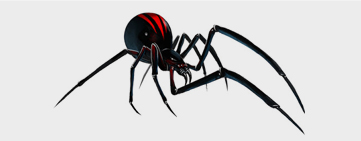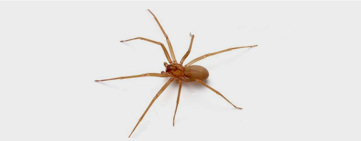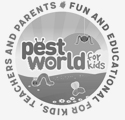INfomation about
Spiders
Our Team Knows Spiders
A small
Intro about Spiders
Spiders can be difficult for residential and commercial properties to control in NYC & NJ. Having a professional pest control company that specializes in serving New York and New Jersey is essential to a long term Spiders control solution that provides peace of mind.
Black Widow Spiders
Latrodectus spp.
Overview:
This spider gets its name from the popular belief that the female eats the male after mating, although this rarely happens in nature. Black widow spiders are most recognized for the red hourglass shape under their abdomen.
Habits:
Outside, black widows commonly live in protected areas such as under stones or decks and in firewood piles, tree stumps and shrubs. They are also commonly found in barns, outhouses, sheds and barrels. Indoors, black widows prefer the undisturbed and cluttered areas of garages, basements and crawl spaces. Black widows spin irregular webs, which they usually build at night.
Threats:
The biggest threat posed by black widow spiders is their bite. Males are not of concern as they lack potent venom and rarely bite, but females are known to be especially aggressive after laying, and when guarding, eggs. Pain is usually immediate, but black widow bites are not always felt. In this case, the only reliable evidence is a slight swelling with two tiny fang marks. Symptoms of a black widow bite include fever, increased blood pressure, sweating and nausea.
Prevention:
- Reduce clutter in basements and garages to eliminate hiding spots.
- Wear heavy gloves when moving items that have been stored for a long period of time.
- Inspect shoes before wearing them, as they are a frequent spider hiding spot.
- Store firewood at least twenty feet from the home and five inches off the ground.
- If you are bitten by a black widow, seek prompt medical attention.
- If you suspect you have a black widow infestation, contact a licensed pest professional.
Did you know? Black widow spiders…
- hang upside-down in their webs
- are poisonous when ingested during the first 18 days of their life
- disperse from the egg sac by spinning silk threads and floating out on the breeze like kites, in a practice called “ballooning.”
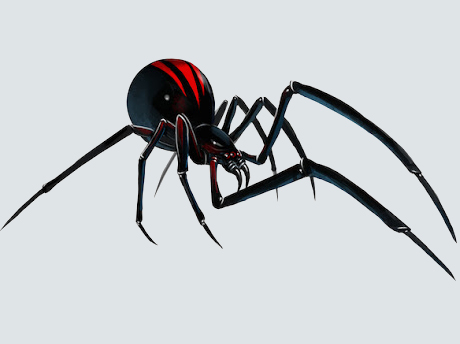

Color:
Black abdomen with a red hourglass marking on back
Shape:
Spherical
Size:
1¹⁄2 – 13⁄₈ inches long
Region:
Various species found throughout the U.S.Packages For Spiders Protection
Save Money Today
up to $75 OFF
If you are a new customer, enjoy $75.00 off your Home Pest Protection Premium plan.
Coupon Code: HomePre22

Call & Get Your Free Estimate
855-737-8765
Brown Recluse Spiders
Loxosceles spp.
Overview:
Brown recluse spiders get their common name from their coloration and reclusive habits. They typically run for cover when disturbed.
Habits:
Brown recluse spiders feed on small live prey such as insects. Outside, brown recluse spiders are typically found around rocks, utility boxes and woodpiles or under bark. Indoors, they can be found in any undisturbed area, such as inside boxes, among papers, in seldom-used clothing and shoes, under furniture, or in crevices such as baseboards and window moldings. Closets, attics, crawl spaces and basements are the most common hiding areas.
Threats:
Both female and male brown recluse spiders can bite and inject venom, making them a danger to humans. The bite is usually not felt, but results in a stinging sensation followed by intense pain as long as six to eight hours later. A small blister usually develops at the bite location that can turn into an open ulcer. Restlessness, fever and difficulty sleeping are common symptoms of a brown recluse spider bite.
Prevention:
- Store clothing and shoes inside plastic containers, and shake out all clothing that has been in a hamper, on the floor or in storage before wearing.
- Pay special attention to items like boots, baseball mitts, skates and gloves that are used less often
- To prevent entry into a structure, seal all internal and external cracks and crevices.
- If you suspect you have been bitten by a brown recluse spider,
seek prompt medical attention. - If you suspect you have a brown recluse spider infestation, contact a licensed pest professional.
Did you know? Brown recluse spiders…
- always have six eyes, arranged in a semicircle, in three groups of two.
- often infest cedar shake roofs.
- spin irregular webs, which are not used for catching prey but rather as a retreat.
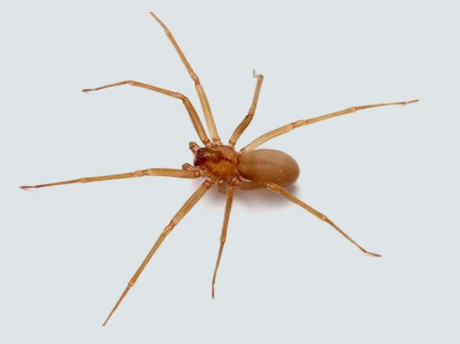

Color:
Tan to dark brown
Shape:
Round, usually with darker violin shaped marking on dorsum
Size:
¼ – ¹⁄2 inch long


